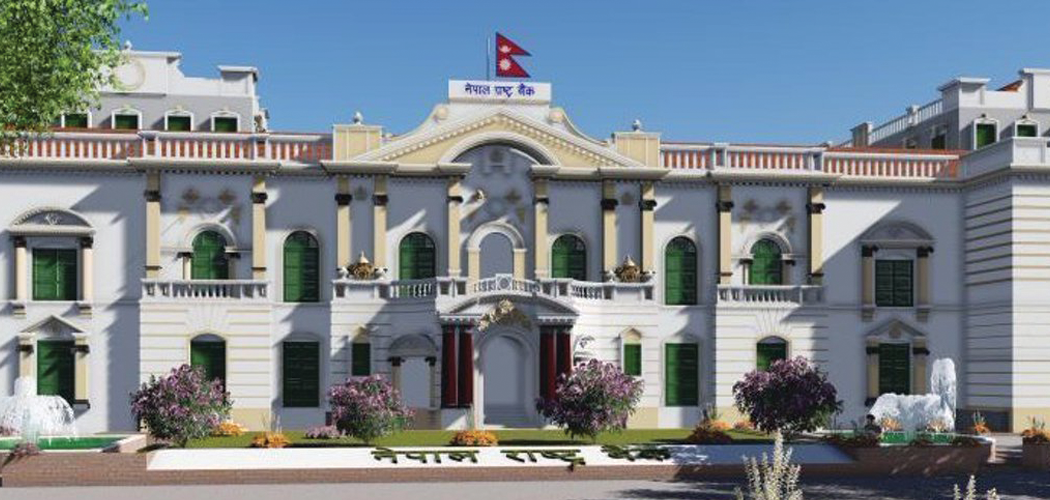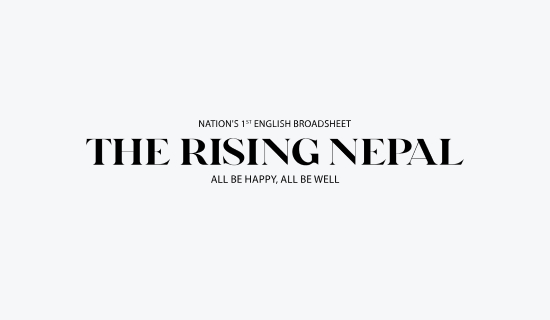- Sunday, 10 August 2025
NRB increases maximum share loan limit to Rs. 200 million
By A Staff Reporter,Kathmandu, Oct. 7: Nepal Rastra Bank has increased the share mortgage loan limit. The central bank has revised the unified directive 2079 issued to banks and financial institutions of ‘A’, ‘B’ and ‘C’ categories and increased the share mortgage loan limit for both individuals and institutions.
The NRB has set the limit of share mortgage loans at Rs. 150 million for individuals and Rs. 200 million for institutions. According to which, the maximum single obligor limit of margin nature of loans flowing into securities from any one or all licensed institutions has been fixed at Rs. 150 million. Earlier, this limit was Rs. 120 million.
For institutional investors established with the main purpose of investing in the securities market, the maximum limit of such loans has been fixed at Rs. 200 million.
According to the directives, the banks and financial institutions providing such loans must ensure that the limit is not exceeded while extending or renewing the loan.
According to the central bank, banks and financial institutions should maintain a 100 per cent loan loss system in case of loans, disbursements or renewals exceeding the specified limit.
Earlier, share investors had been demanding to either increase share loan limit or remove share loan limit provision.
PAN mandatory for opening fixed account
Now, permanent account number (PAN) has to be mentioned compulsorily while opening a fixed account for deposits amount of more than Rs. 5 million. While amending the unified directive 2079, the NRB has made PAN mandatory when keeping fixed deposits of more than Rs. 5 million.
According to the revised provisions, when accepting a fixed deposit of more than Rs. 5 million from a natural individual, the licensed institution must obtain the permanent account number of the depositor compulsorily.
Similarly, the BFIs should make necessary arrangements to protect deposits up to Rs. 500,000 in savings and fixed accounts in the name of natural persons with the “Deposit and Credit Protection Fund”.
The NRB has arranged that the bank cannot charge more than 2 percentage points of interest rate for loans and borrowing of the same nature.
Similarly, the NRB has arranged that if the interest rate gap exceeds the limit in any month, it should be brought under the limit within the same quarter. In case the interest rate is not brought to limit within that time, the board of directors and the chief executive officer of the institution violating the limit of the interest rate will be prosecuted according to the Nepal Rastra Bank Act 2058.
50% loan on real estate mortgage
The NRB has arranged to take loans up to 50 per cent of the value of real estate mortgage.
Earlier, there was a provision that people could only take 30 per cent of the market value of real estate in Kathmandu and 40 per cent outside of Kathmandu.
As per the new arrangement, the ratio between the real estate loan and the Fair Market Value of its mortgage security (Loan to Value Ratio) should be maintained only up to 50 per cent.
However, in the case of Personal Residential Home Loans and loans provided for the construction of residential houses to projects of house construction business companies that are registered and operating as per the rules, such ratio can be maintained up to 60 per cent to a maximum. The new arrangement is expected to bring dynamism in the real estate business.
Similarly, the central bank has adopted a flexible policy on vehicle loans. The NRB has arranged that personal hire purchase/personal auto loans (above Rs. 2.5 million) shall attract risk weight of 125 per cent.
As per the new provision, the commercial banks have to maintain Countercyclical Buffer as stipulated in the Capital Adequacy Framework from 2023/24. By the end of 2023/24, such a buffer will have to be maintained at 0.5 per cent.
By mid-July 2026, the BFIs should provide at least 15 per cent of the loans to the agricultural sector.
As per the new provision, the BFIs should invest 11 per cent in agriculture by mid-July 2024, 12 per cent by mid-July 2025, 13 per cent by mid-July 2026 and 15 per cent by mid-July 2026.
Similarly, by mid-July 2026, a minimum of 10 per cent of the loan should be disbursed to the energy sector.
By mid-July 2026, a minimum of 15 per cent of loans should be provided to micro, cottage, small and medium enterprises (including loans of less than Rs. 10 million and directly disbursed poor class loans).
Banks and financial institutions should give special priority to the establishment and operation of industries based on indigenous raw materials while disbursing such loans, said the NRB.



-original-thumb.jpg)



-square-thumb.jpg)
-square-thumb.jpg)






